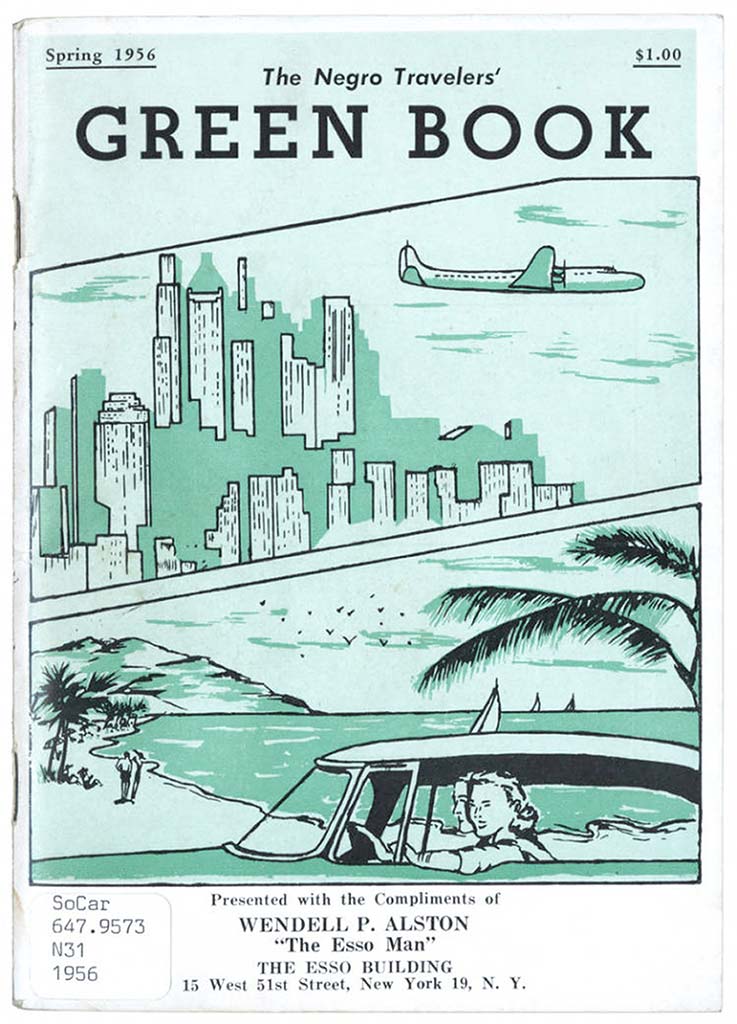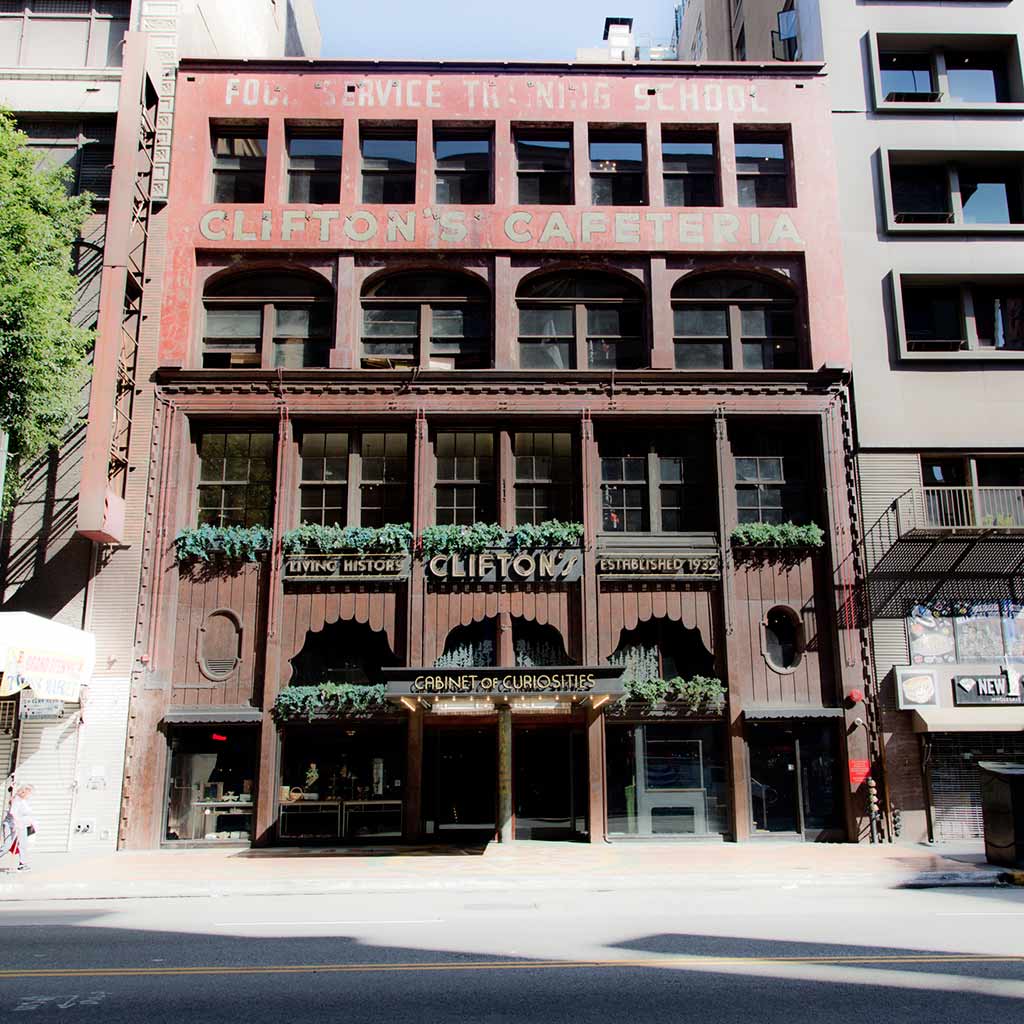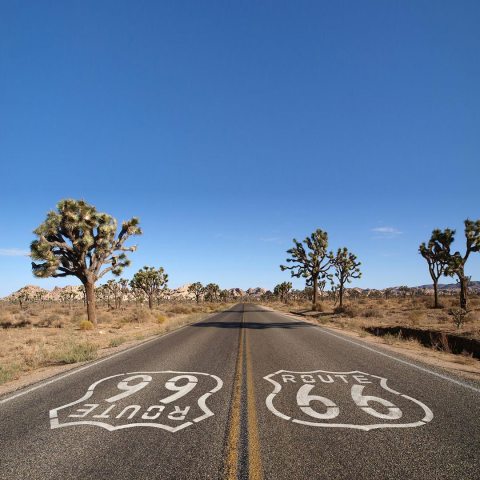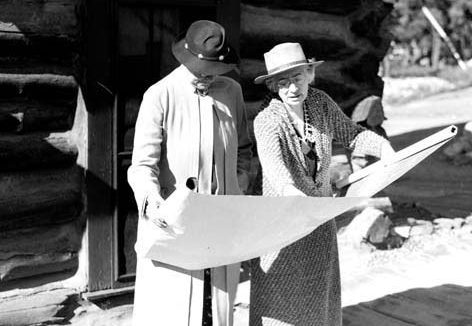Route 66 and the Negro Motorist Green Book
During Route 66’s peak, the segregated south was notorious for shutting Blacks out, but it was even more challenging for Blacks to travel in the Western United States. Forty-four out of 89 counties along Route 66 were “Sundown Towns,” all-white communities with signs posted at the county line warning Blacks to be out of town before sundown. While most Black travelers aimed to stay in larger towns, options were still limited.
The Negro Motorist Green Book was a travel guide published in 1936-1966 to help Black people navigate the Jim Crow era. Victor H. Green, a Black postal worker from Harlem created the book, which featured restaurants, hotels, barbershops, beauty parlors, taverns, garages, and gas stations that were willing to serve Blacks.

These are some of the best remaining Green Book properties on Route 66.
Green Book Sites Along Route 66
Clifton’s, Los Angeles, CA
Clifton’s (648 Broadway) is full of atmosphere, intrigue, taxidermy, and incredible history. This classic cafeteria-style restaurant opened in 1935, closed in 2011, and underwent a $10 million renovation to reopen in 2015. Owner Clifford Clinton followed what he called the “The Cafeteria Golden Rule.” He never turned away anyone who was hungry, allowing customers to pay what they could afford.
The large, unusual cafeteria covers five floors with a giant fake redwood tree rising through the center. Items include cafeteria comfort food, such as mac and cheese, peas and carrots, mashed potatoes, and throwback desserts like Jello. In the evening, there’s a full bar serving classic concoctions; a 250-pound meteorite sits on the bar.
Clifton’s main branch (618 Olive St.) was listed in the Negro Motorist Green Book and served Blacks during Jim Crow. It’s located at 7th and Broadway, the original terminus of Route 66, making it the perfect place to celebrate the end to a long and wonderfully strange trip.

The DuBeau, Flagstaff, AZ
The DuBeau (19 W. Phoenix Ave.) is an affordable and charming historic motel and hostel located on a pre-1934 alignment of Route 66 in downtown Flagstaff. (The route traveled west of the railroad tracks on Beaver Street, then north on Phoenix). The DuBeau was also listed as a Green Book property, in the travel guide published for African American travelers during Jim Crow. Economy rooms feature a double bed, a desk, and a mini-fridge, but no television. Deluxe rooms are larger with one double bed, a flat-screen cable TV, and a lounge chair. Premium rooms include two double beds and a kitchenette with a microwave.
DeAnza Motor Lodge, Albuquerque, NM
When Black travelers came through Albuquerque on Route 66, only 6 percent of the nearly 100 motels along Central Avenue would open their doors. The DeAnza Motor Lodge (4301 Central Ave. NE) was one of them. Built in 1939 and run by C. G. Wallace, a prominent Zuni trader, the DeAnza was a gathering spot for artisans, traders, and those who loved southwestern Indian crafts.
Comprised of seven separate buildings in the Spanish Colonial-Pueblo Revival style, it was the largest motel on Central Avenue. The original 30 rooms eventually expanded to 67 and offered modern amenities such as private telephones and air-conditioning. The on-site Turquoise Room diner featured thousands of pieces of turquoise embedded in the linoleum floor. Seven murals painted by Zuni artist Tony Edaakie for the basement conference room depicted a sacred Zuni Shalako ceremony.
Wallace sold the building in 1983 and after several changes in ownership, the property sat empty for more than a decade. The city of Albuquerque purchased the hotel in 2003, saving it from demolition; in 2004, the DeAnza was named a city landmark. Today, it is recognized as one of the best remaining mid-century motels along Central Avenue and has been listed on the State Historic Register. It even made an appearance in an episode of the television series Breaking Bad.
Warren Hotel, Tulsa, OK
The Greenwood Cultural Center (322 N. Greenwood Ave.) has a valuable collection of historical memorabilia and photos of the area before, during, and after the Tulsa Race Riot. Although most of Greenwood District was burned to the ground, the Black community persevered and opened businesses such as The Warren Hotel (105 N. Greenwood St.), located down the street from the cultural center.
For more information and a short video about the Green Book, visit www.taylormadeculture.com.

